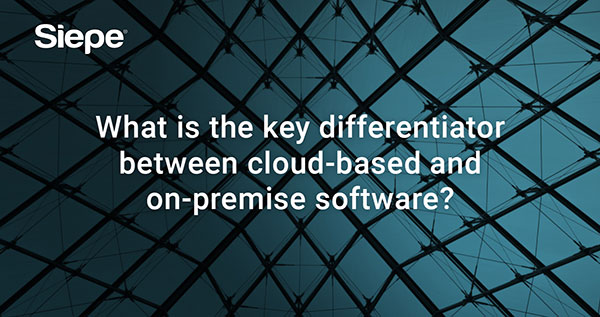As the global pandemic continues to run its course, businesses need to think about the future of their operations and IT infrastructure. At the start of the crisis, many asset managers realized the benefit of outsourcing technology during market volatility. But why should they continue to outsource in the future?
With the industry becoming increasingly digital, on-premise IT infrastructure may likely become obsolete. As the trend toward remote work further evolves, asset managers are more likely to consider outsourcing technology permanently.
Here are the key differences between implementing an on-premise IT infrastructure and a third-party cloud vendor.
On-premise IT infrastructure
Implementing IT infrastructure on-premise is a traditional method that involves businesses investing in and managing their own computer servers, including back-ups and software upgrades. This requires large upfront costs, in addition to ongoing costs for creating an internal team, and managing the security, maintenance and replacement of internal servers.
Cybersecurity is a top factor in the decision to deploy on-premise IT infrastructure. Especially within financial services, firms want to be in control and have extra layers of security to protect their sensitive information. Securing data within in-house servers and IT infrastructure therefore seems more logical. However, this can lead to a false sense of security, as on-premise infrastructure does not negate the risk of cybersecurity breaches.
Cloud IT infrastructure via a third party provider
What is the key differentiator between cloud-based and on-premise software? Third-party providers can host and manage a business’s IT infrastructure within a secure, public cloud environment, with full redundancy and disaster recovery – which is absolutely critical. Additionally, cloud-based providers have built-in remote advantages, including full remote implementation capabilities. This allows businesses to pay on an as-needed basis, while offering businesses the flexibility to scale quickly and efficiently, regardless of location, to meet their requirements.
Unlike on-premise IT infrastructure, the public cloud does not require large upfront costs and it’s much faster and easier to deploy. Working with a technology vendor also eliminates the burden of managing internal IT infrastructure.
Making a strategic decision
The bottom line is that businesses need to consider the long-term impact of their decision. Asset managers may be reluctant to shift to outsourced technology due to the costs and time involved in implementing on-premise infrastructure. However, the drawbacks of maintaining on-premise infrastructure far outweigh the positives. As the industry moves towards remote work environments, asset managers will undoubtedly need the flexibility that only outsourcing can provide.
To read more Insights by Siepe, follow us on LinkedIn.

